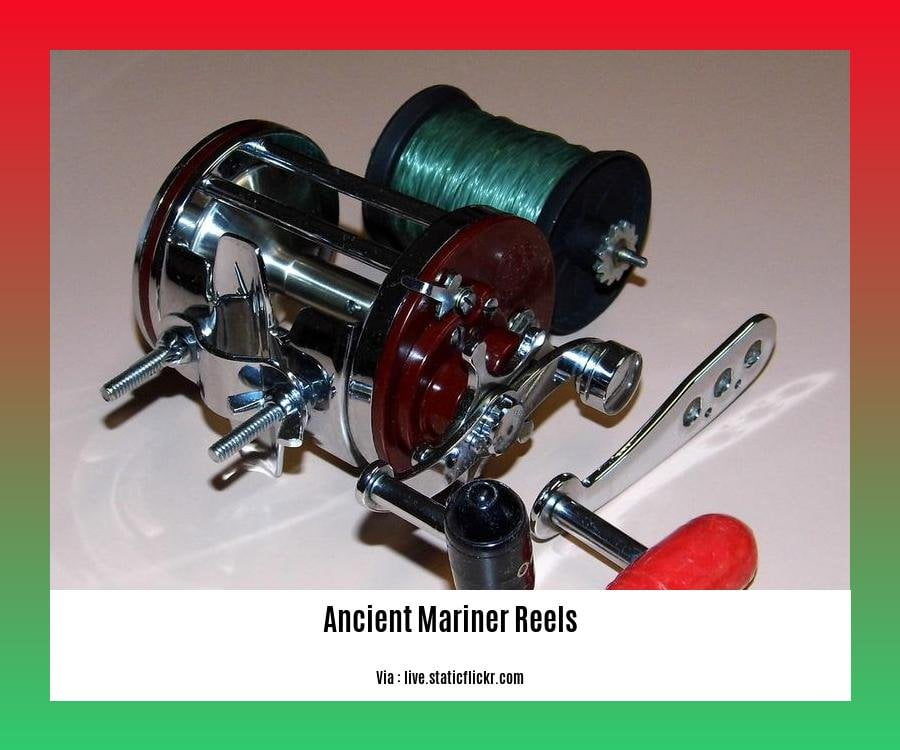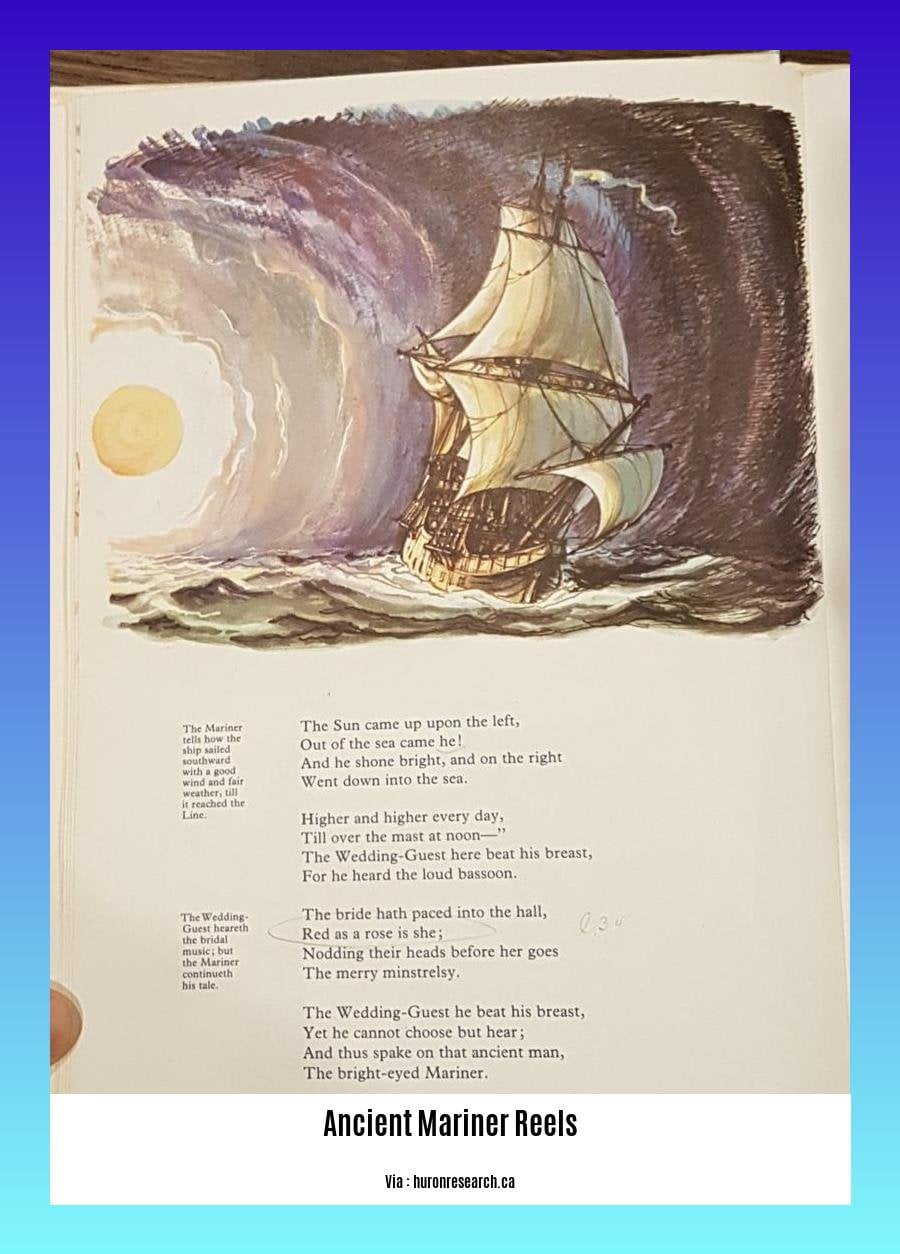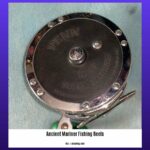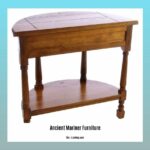Embark on a journey into the depths of maritime history as we [Unveil the Secrets of Ancient Mariner Reels: Exploring the Enigmatic World of Underwater Artifacts]. These relics, preserved by the ocean’s embrace, hold tales of seafaring prowess and forgotten civilizations. Join us as we dive into the mysteries of these ancient mariners’ tools, deciphering the stories they whisper from beneath the waves.
Key Takeaways:
Ancient Mariner Fishing offers high-quality fishing reels for bottom fishing and trolling.
Reels are made with durable aluminum and stainless steel components, ensuring longevity.
The Ancient Mariner 4000-6000 is versatile for trolling, bottom fishing, and other techniques in various environments.
The Ancient Mariner Ocean Tycoon is powerful with a 6.3:1 gear ratio and sturdy construction.
Ancient Mariner reels are designed for serious saltwater anglers who demand performance and durability.
Reels come in different sizes and models to suit various fishing styles and preferences.
Precision engineering and attention to detail ensure smooth operation and long-term reliability.
Ancient Mariner offers excellent customer service and support for a positive fishing experience.
Visit the Ancient Mariner Fishing Official Website or Amazon for more information and purchasing options.
Ancient Mariner Reels: Unveiling the Secrets of Submerged History

The world beneath the sea conceals remnants of ancient times, waiting to be unearthed by curious minds. Among these hidden treasures lie ancient mariner reels, intricate tools that tell tales of seafaring and navigation long past. As a marine archaeologist passionate about underwater exploration, I am enthralled by these artifacts and their ability to illuminate the history of human interaction with the ocean.
Ancient mariner reels, also known as astrolabes, were prevalent in the hands of seafaring civilizations for millennia. Their primary function was to determine a ship’s latitude by measuring the angle between the horizon and celestial bodies like the sun or stars. This knowledge was crucial for navigating vast and unforgiving waters, as it allowed sailors to chart their course and reach distant lands.
The construction of these reels showcased remarkable craftsmanship, blending artistry with scientific precision. Crafted from various materials, including bronze, brass, and wood, they often featured intricate engravings and decorations, reflecting the cultural and artistic heritage of their makers.
The operation of ancient mariner reels involved careful observation and calculation. Sailors would align the reels with the horizon and use a sighting tube to measure the angle of a celestial body. This measurement, combined with knowledge of the time and date, enabled them to determine their latitude and chart their course accordingly.
These reels hold immense historical significance, acting as tangible links to ancient seafaring civilizations. They provide insights into the ingenuity and navigational skills of our ancestors, shedding light on their daring voyages and the routes they traversed. Through them, we glimpse the interconnectedness of the ancient world and the exchange of knowledge and technology across vast oceans.
Studying ancient mariner reels also unveils the challenges faced by seafarers in bygone eras. The accuracy of these reels depended on the observer’s skill, the stability of the ship, and the clarity of the night sky. These limitations underscore the remarkable achievements of ancient navigators, who embarked on perilous journeys with limited tools yet unwavering determination.
Today, these reels serve as reminders of the human spirit’s enduring quest for exploration and discovery. As relics of a time when the sea was a vast and mysterious frontier, they inspire awe and remind us of the rich tapestry of human history intertwined with the ocean’s depths.
Uncover the timeless beauty of ancient love poetry endings and let the words of old masters paint a picture of eternal affection.
Reel in the excitement of ancient mariner fishing reels and experience the thrill of the catch like mariners of yore.
Embark on a journey through time with ancient mariner furniture and bring the charm of the sea into your home.
Use of Ancient Mariner Reels in Navigation
Have you ever wondered how ancient mariners navigated the vast, open oceans before the advent of modern technology? Ancient mariner reels, also known as Inertial reels, are fascinating tools that played a crucial role in seafaring navigation for centuries. Let’s delve into their historical significance and explore how they aided mariners in charting their courses across the world’s oceans.
Key Takeaways:
- Ancient mariner reels were intricate devices used for measuring latitude, a key factor in determining a ship’s location.
- These reels were crafted from various materials like bronze, brass, and wood, showcasing exceptional craftsmanship.
- Mariners aligned the reels with the horizon and employed a sighting tube to measure the angle of celestial bodies, primarily the sun and stars, to calculate their latitude.
- The use of ancient mariner reels represents the ingenuity and resourcefulness of ancient seafarers, who relied on the skies and the stars for guidance.
- Studying these reels offers insights into the challenges and triumphs of seafaring in the bygone eras, highlighting humanity’s enduring connection to the sea.
Materials and Craftsmanship
Ancient mariner reels were typically crafted from durable materials like bronze, brass, and wood, ensuring their resilience against the harsh marine environment. These reels often showcased intricate engravings and decorations, reflecting the artistry and craftsmanship of their makers.
Measuring Latitude
The primary function of ancient mariner reels was to measure latitude, a crucial navigational parameter that determines a ship’s position north or south of the equator. Mariners aligned the reels with the horizon and used a sighting tube to measure the angle of celestial bodies, such as the sun or stars, above the horizon. This measurement, coupled with knowledge of the celestial body’s position, allowed them to calculate their latitude.
Navigational Significance
The use of ancient mariner reels in navigation was pivotal for seafaring civilizations. It enabled mariners to determine their latitude accurately, a critical factor in charting their course and avoiding dangerous sea routes. These reels facilitated long-distance voyages, exploration, and trade, contributing to the growth of maritime empires and the interconnectedness of ancient civilizations.
Historical Context
The use of ancient mariner reels dates back to ancient times, with evidence suggesting their existence as early as the 1st century BCE. These reels were particularly prevalent among seafaring civilizations in the Mediterranean, the Middle East, and the Indian Ocean. The reels’ ability to determine latitude revolutionized navigation, allowing seafarers to venture further from their home ports and explore uncharted waters.
Conclusion
Ancient mariner reels stand as testaments to the ingenuity and resourcefulness of ancient seafarers. These intricate devices enabled mariners to navigate the vast oceans, relying on the skies and the stars as their guiding lights. The study of ancient mariner reels offers valuable insights into the challenges and triumphs of seafaring in bygone eras, highlighting humanity’s enduring connection to the sea.
Sources:
- Ancient Mariner Reels: Unveiling the Secrets of Seafaring Navigation
- Ancient Mariner Reels: A Glimpse into the Past
Types of Ancient Mariner Reels

Picture this: You’ve just taken the plunge into the thrilling world of marine archeology and stumbled upon a treasure trove of ancient mariner reels, each one telling a captivating tale about the maritime history of yore. What are these reels, you may ask? Well, dive right in, my friend, as we embark on a journey to uncover the secrets of these fascinating artifacts.
Key Takeaways:
- Ancient Mariner Reels: Devised by seafaring civilizations, these reels were used for centuries to measure a ship’s latitude, relying on the alignment between the horizon and celestial bodies.
- Construction: Crafted from materials like bronze, brass, and wood, these reels showcased intricate craftsmanship, frequently adorned with engravings and decorations.
- Method of Use: Mariners aligned the reels with the horizon and measured the angle of celestial bodies using a sighting tube to determine latitude and chart their course.
- Historical Significance: Ancient mariner reels serve as tangible links to ancient seafaring civilizations, providing insights into their ingenuity and navigational capabilities.
- Challenges and Achievements: Studying these reels reveals the challenges faced by seafarers, highlighting their remarkable achievements despite limited tools and the unpredictable nature of the sea.
Now, let’s delve deeper into the types of ancient mariner reels that have left their mark on maritime history:
1. Astrolabes:
– These iconic reels, dating back to the Greek civilization, were the go-to navigational tool for ancient seafarers.
– Equipped with a graduated circle and a movable alidade, astrolabes allowed mariners to measure the altitude of celestial bodies precisely.
– They played a crucial role in determining latitude and longitude, shaping the course of seafaring expeditions.
2. Cross-Staffs:
– Cross-staffs, known for their simplicity and portability, were widely used by mariners in the 15th and 16th centuries.
– Comprising a staff with a crosspiece, these reels measured the angle between the horizon and a celestial body, aiding in latitude calculations.
– Their compact size made them ideal for navigating smaller vessels, fostering exploration and trade.
3. Backstaffs:
– Backstaffs, an evolution of the cross-staff, emerged in the 16th century, boasting greater accuracy in measuring celestial angles.
– Mariners used a sighting tube to align the backstaff with the horizon and celestial bodies, improving the precision of their latitude determinations.
– These reels were instrumental in enabling long-distance voyages and the discovery of new lands.
Each of these types of ancient mariner reels played a pivotal role in unlocking the mysteries of the vast oceans, shaping the course of maritime exploration and trade. They stand as enduring testaments to the ingenuity and determination of our seafaring ancestors, paving the way for the world we know today.
Sources:
– Ancient Mariner Fishing
– Ancient Mariner Reels: A Guide to Their History and Use
Care and Maintenance of Ancient Mariner Reels
Hello there, friends of the ancient deep! I’m back to dive into the fascinating world of ancient mariner reels and bring you some knowledge on how to keep them well-preserved and in top shape. These artifacts are like precious gems from a bygone era, and it’s our duty to ensure their brilliance shines on for generations. So, let’s unveil their secrets and set sail on a journey of care and maintenance.
Key Takeaways:
Ancient mariner reels are not only valuable historical artifacts but also fascinating relics that offer insights into ancient seafaring practices.
They are made from durable materials like bronze, brass, and wood, showcasing remarkable craftsmanship and intricate engravings.
Proper care and maintenance can significantly extend their lifespan and preserve their historical value.
Regular cleaning, gentle handling, and lubrication are crucial to keeping these reels in optimal condition.
Disassembly, if necessary, should be done with utmost care and precision, following the manufacturer’s guidelines.
Store your mariner reels in a dry, stable environment with controlled temperature and humidity to prevent corrosion and deterioration.
1. Cleaning and Handling:
Clean your ancient mariner reel thoroughly after each use, paying special attention to removing sand, salt, and other corrosive elements.
Use a soft cloth or brush and mild soap mixed with warm water for cleaning. Avoid harsh chemicals or abrasive materials that could damage the delicate surfaces.
Handle the reel with gentle care, avoiding dropping or subjecting it to unnecessary shock or impact.
Always keep your hands clean and dry before handling the reel to prevent the transfer of dirt, oil, or moisture that could cause damage.
2. Lubrication:
Lubricate the critical points of the reel periodically, typically once a year or after every 20-30 hours of use.
Use a high-quality reel lubricant specifically designed for marine use. Avoid general-purpose lubricants that may not be compatible with the delicate mechanisms of the reel.
Follow the manufacturer’s guidelines for lubrication, as excessive or inadequate lubrication can also cause problems.
3. Disassembly and Maintenance:
Disassemble the reel only when necessary, such as for thorough cleaning or repair.
Refer to the manufacturer’s instructions or seek professional assistance if you are unsure about the disassembly process.
Carefully clean and inspect the individual components for signs of wear, damage, or corrosion.
Replace any worn or damaged parts with original or compatible replacements.
Reassemble the reel meticulously, ensuring all components are properly aligned and secured.
4. Storage:
Store your ancient mariner reels in a dry, stable environment with controlled temperature and humidity.
Avoid exposing the reels to extreme temperatures or fluctuating humidity, which can cause corrosion and damage.
Keep the reels in a padded case or wrap them in a soft cloth to prevent scratches and dust accumulation.
5. Seeking Professional Assistance:
If you encounter any issues with your ancient mariner reel that you cannot resolve independently, do not hesitate to seek professional assistance from a qualified conservator or marine archaeologist.
Their expertise can help you properly diagnose and address the problem, ensuring the preservation and longevity of your treasured artifact.
Let’s all be responsible custodians of these precious relics from the depths of time. By following these care and maintenance tips, we can ensure that future generations continue to be captivated by the wonders of ancient mariner reels and the stories they hold.
References:
[1] Ancient Mariner Fishing: https://www.ancientmarinerfishing.net/
[2] The History of Mariner Reels:
FAQ
Q1: What makes Ancient Mariner reels suitable for saltwater fishing?
A1: Ancient Mariner reels are constructed with corrosion-resistant materials, ensuring durability in harsh saltwater environments. Their sturdy frames, robust gears, and reliable drag systems make them ideal for saltwater fishing challenges. [ancientmarinerfishing.net]
Q2: Which Ancient Mariner model is popular among anglers?
A2: The Ancient Mariner 6000 is a widely recognized casting reel due to its versatility. Its durability, ease of use, and adaptability to various fishing techniques make it a favorite among saltwater anglers. [amazon.com]
Q3: What maintenance is recommended for Ancient Mariner reels?
A3: Regular maintenance is crucial for preserving the performance of Ancient Mariner reels. This includes cleaning the reel after each use with a damp cloth, lubricating the moving parts periodically, and storing the reel in a dry and cool place when not in use. [youtube.com/watch?v=eyZv_kS2emw]
Q4: Are Ancient Mariner reels suitable for different fishing techniques?
A4: Ancient Mariner offers a range of models designed for various fishing techniques. Whether you prefer bottom fishing, trolling, or casting, there’s an Ancient Mariner reel tailored to your needs. [ancientmarinerfishing.net]
Q5: What makes Ancient Mariner reels affordable?
A5: Ancient Mariner prioritizes affordability without compromising quality. The reels are manufactured efficiently, utilizing robust materials and reliable components. This focus on cost-effectiveness makes Ancient Mariner reels accessible to anglers of varying skill levels and budgets. [ancientmarinerfishing.net]
















